Recently I leafed through the Official Gazettes for Design Patents and found two design patents of woodcuts for the Chinese New Year ("woodcuts"), Wu Zi Deng Ke (five sons successfully pass imperial examinations) and Zhen Zhai Zhong Kui (Zhong Kui, a guardian spirit in the Chinese mythology, guards the homestead) filed before October 1st, 2009, have passed examinations and granted patents. These types of applications have drawn my attention and stirred my thoughts. See Images 1 and 2 below.
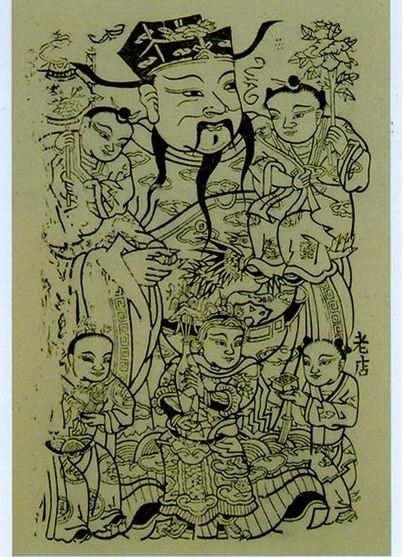
As traditional folk arts, woodcuts originated around the Ming Dynasty and had their heyday in the Qing Dynasty. It was easy to print these images which also sold cheap. With contents familiar to and popular with the folk, the woodcuts were indispensable during Chinese Lunar New Year and holidays. The "woodcuts" handed down in China were largely sketchy, bright and pure in color, with contents either reflecting festivities and auspiciousness, or dispelling evil and celebrating victories. Chinese woodcuts originated from Zhuxian Town of Kaifeng city, Yangliuqing of Tianjin Municipality and Taohuawu of Suzhou city, etc. In terms of the history and use, woodcuts ought to belong to the traditional cultural art of the nation.
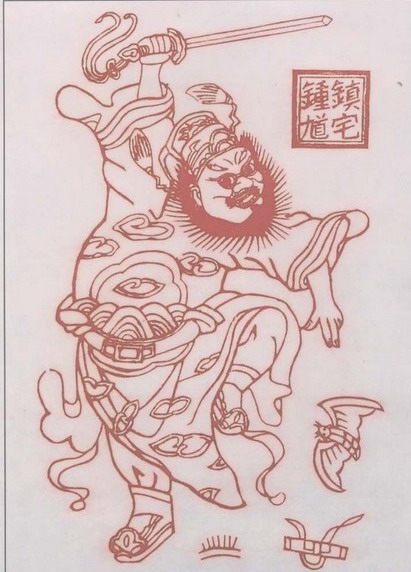
The 2006 version of Guidelines for Patent Examination , under Article 6.4.3., provides "no design patent protection for the subject matter" in, inter alia, item 8 as "works of exclusively aesthetic value" Hence, how to determine the nature of "woodcuts" is the difficult question.
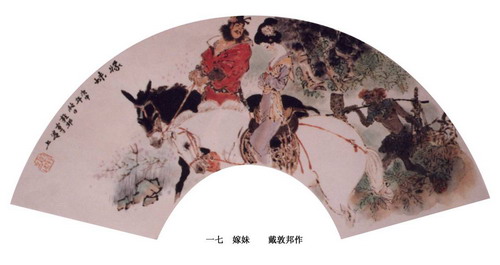
The 2010 versions of Guidelines for Patent Examination excludes in Article 7.4(8) design patent protection for "any works of purely aesthetic, calligraphic or photographic value." Therefore purely aesthetic works are not subject matter for design patent protection. The author is of the view that the design in Patent Law mainly protects industrial products as main objects according to classification of designs. "Industrial" is certainly broad enough to encompass handmade products capable of being mass made. Among the three major elements, the shape is the modeling of industrial products, while the pattern and color, though both are elements in aesthetics, mainly emphasize the pattern and color used on the products in Patent Law. According to Article 10(5) of Copyright Law, works such as "woodcuts" have the "right of reproduction, i.e., the right to make one or more copies of a work by means of printing, photocopying, rubbing, etc." More importantly, works of "woodcuts" are the expression of the author's ideas and feelings in such forms as lines, colors and characters. Therefore, such "woodcuts" can better be protected as a copyright subject matter of folk arts under the Copyright Law.
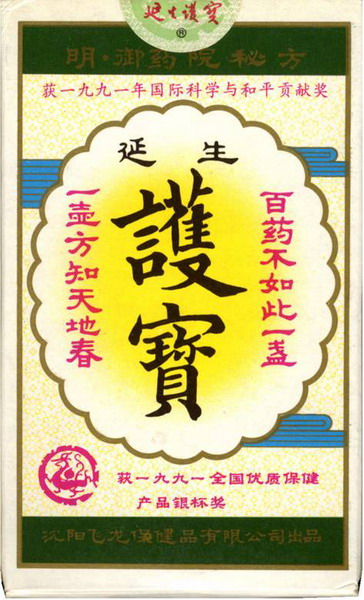
Are works of art and photography solely a subject matter protected by Copyright Law? Not necessarily. From the design's perspective, the majority of countries in the world require the shape (modeling arts), pattern and color to be used on products. Therefore, in the absence of specific products, pure works of art and photography will no longer be the design set forth in Patent Law. A picture of flowers and birds or a pattern, without products combined, falls essentially into the category of artistic works or fine arts. Only when the picture is engraved on a wallpaper or coffee cup can it become part of the design, broadly speaking, a pattern for the product's design. As a result, fine arts and photographs can be incorporated as designs and protected by Patent Law. We should also note that the picture and photograph used on the products will not change their artistic attributes even though they are mixed with the products in whatsoever ways, which goes precisely in line with the provision of "creating an aesthetic feeling" in the third paragraph of Article 2 of Patent Law. Therefore, the industrial design and works of fine arts are closely related. However, when a design only "creates an aesthetic feeling" and is in no way as artistic as a "work of fine arts," the two will be ranked differently. The picture and photograph are protected by Patent Law as part of the design, but it should be noted that the protection should avoid conflicting with prior copyright. In other words, without consent from rights holders, a design will not be granted patent protection if it uses a picture or photograph with prior legal rights and damages the legitimate rights or interests of prior rights holders upon implementation of the patent rights.
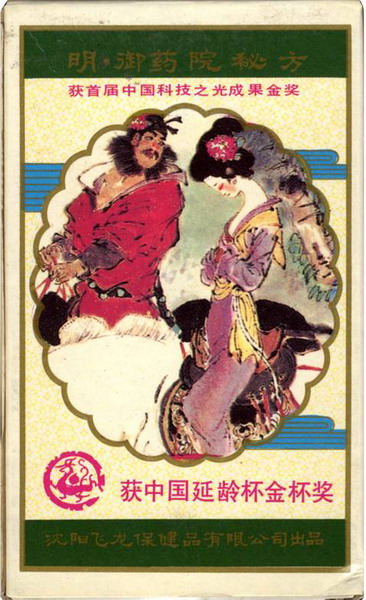
On September 11th, 2000, the Patent Reexamination Board issued a decision No. 2599, which was based upon invalidation request, ruling that acquisition of patent rights shall meet the granting requirements set forth in Patent Law and shall not infringe upon others' prior rights. The Board found that the defendant, a Shenyang-based health care products company, put the main part of the Chinese picture Jia Mei (Zhong Kui Marrying Off His Younger Sister) as packaging decoration of its products for commercial purposes without authorization or permission from the plaintiff, on the packaging of its "Hubaoye" health care products (Image 4), infringing upon the rights of the plaintiff's work (Image 3). In accordance with the Patent Law, "a design for which a patent right is granted shall not be in conflict with lawful rights acquired by others before the date of application," the Board invalidated the design patent.
China started to implement the revised Patent Law on October 1st, 2009. According to 7.4 "Non-patentable situations for design patents" of the 2010 Guidelines for Patent Examination, any work which belongs wholly to the field of fine arts, penmanship or photography shall not be granted design protection. Woodcuts fall within the category of fine arts and should be generally protected by Copyright Law. Article 2 of Implementing Regulations of Copyright Law provides that for the purposes of Copyright Law, work(s) shall mean original intellectual achievements in the literary, artistic, and scientific domains that can be reproduced in a tangible form. On the basis of the aforesaid two intellectual property (IP) laws and the current design examination regime, the author opines that woodcuts fall within the category of works of art and may be protected under the Copyright Law; they are not subject matters as designs under patent protection and should be excluded from the objects of designs set forth in Patent Law.
The author recommends the following three aspects be considered in examination of design patents:
1. Distinction between products and works
A product involves utility when designed, and also material, manufacturing process, and mass production thereof. In other words, no matter how beautiful the design of a product is, it fails if it cannot be used. Therefore, utility takes first priority, and its aesthetic appeal takes the second, whereas works of art largely incorporate the author's own thoughts and feelings discretionarily and unrestrictedly in a bid to impress viewers. In general, there is only one original work of art or photography, and the rest are reproducible copies. These two are world apart.
2. Distinction between mass production of products and reproduction of works
It seems that mass production of products and replication of works are almost identical, but it should be noted that the two fall within different scopes of legal protection. Therefore, replication of fine arts and photographs cannot be simply deemed as mass production of products and the essential properties of the two should not be confused.
3. Distinction between utility of product and usefulness for affecting people's thoughts and feelings
The Locarno Classification (LOC) is an international classification used for the purposes of the registration of industrial designs. It was set up by an agreement concluded at a diplomatic conference held by states party to the Paris Convention for the Protection of Industrial Property in Locarno in 1968. About 99% of goods or services are protected as industrial designs by the LOC. Therefore, the essential functions of products in connection with people's lives, such as clothing, food, shelter and transportation, come closer to meet people's "use value." The woodcuts and photographs, as cultural and artistic works, are intellectual achievements of mental labor. In general, these works are expressions of thoughts and feelings to impress viewers. Some experts think that the industrial design is, as a matter of fact, a practical work of fine arts, and its IP protection has become part of the industrial design law because the design is an industrial or handmade product.
As the design is also a practical work of fine art, countries party to the Berne Convention for the Protection of Literary and Artistic Works have the legislative right to protect the design as copyright. At present, China has put in place a well established IP legal system, Patent Law and Copyright Law have separate objects to protect and their responsibilities are clearly allocated. Therefore, it is appropriate for the industrial design to be protected as the design set forth in Patent Law, and for the works of fine arts, photographs and woodcuts to be protected by.
Surely, there are uncertainties in practice. For example, in the LOC, there are "statuettes," "bas-reliefs" and "trinkets" in Subclass 02 of Class 11; "postcards (picture)" in Subclass 01 of Class 19. Such products go not only in line with the objects for design protection, but also objects for copyright protection. Certainly, such products are largely marginalized in between the two, and the author is of the view that their protection depends on choices of the designers. The LOC is the criterion to classify goods and does not serve as a basis of defining objects for design protection.
(Translated by Wang Hongjun)





